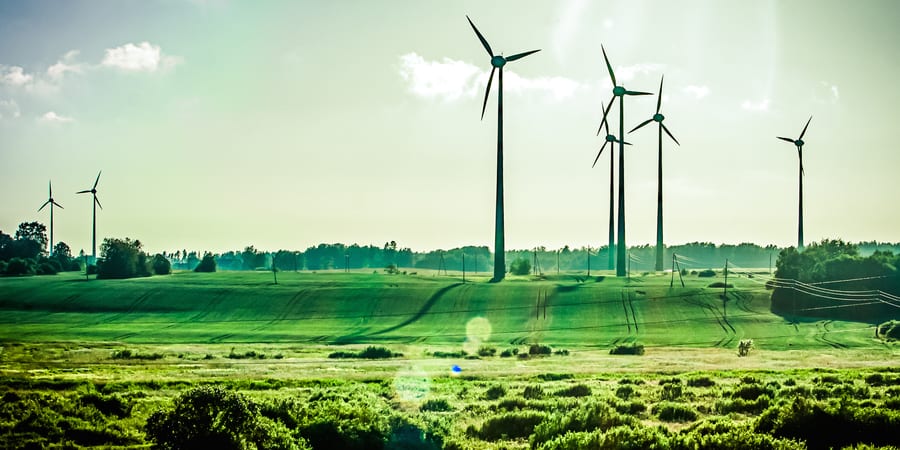
Learning function integration while assembling wind turbines
FEATURE – Over the course of his career in the wind energy industry, the author has learned the power of horizontal integration in the improvement of organizations. In this piece, he shares his experience as a lean practitioner and leader at Ecotècnia.
Words: Toni Maull, former Industrial and Manufacturing Director, Ecotècnia
In 1981 a group of professors and students from two engineering schools here in Barcelona started an organization with the aim to develop technology for wind turbines, and perhaps even change the world. They called it Ecotècnia, a co-operative.
Wind energy was a very new sector at the time. You could only find turbines in Denmark, Germany, a bit in the Netherlands, and that was pretty much it. In its first 10 years, Ecotècnia was able to develop a small wind turbine (15kW). The technology behind the company’s product was always impressive.
I joined in 1991 as a manufacturing engineer. That year the company (now 15-strong) produced a 150-kW turbine. It was also around that time that the sector started to boom and a lot of big companies began to show an interest in renewable energy.
Shortly after I joined, we installed the first commercial wind farm in Spain, which included 50 150-kw wind turbines. They were still rather small, measuring 20 meters in height and weighing eight tons.
A START-UP THAT DOESN’T KNOW IT IS A START-UP
Ecotècnia was what we today call a “start-up,” with no resources but enthusiastic and determined people. From the beginning, the organization had to be very good at developing prototypes, leveraging their only asset – knowledge. We simply had no money to develop several prototypes at once and had to get it right first time. Our future depended on each project.
This led us to create a strong internal culture based on knowledge and the capability to learn about problems and solve them. Ecotècnia people learned early on that problems should be seen as opportunities to improve.
We continued to grow the business step by step until 1995-1997, when big players like Vestas eventually entered the market. All of a sudden, we had to face up to the giants.
We learned the importance of working very closely with our suppliers, which we saw as an important source of knowledge not just for everything concerning the development of a component, but also for the help they could provide during the design phase and in our initiatives to reduce costs. It seemed to us that integration was the only way to succeed.
We didn’t have large volumes (at that time we reached a 7% market share) but we were renowned for our technology and innovativeness. Our products were considered some of the best in the sector. There is no doubt we achieved this by creating an environment based on the development of people and on process knowledge.
KEEP ON GROWING
Towards the end of the 1990s – we now had between 40 and 50 people in the company – we kept expanding and established our first facilities to assemble wind turbines and electrical cabinets. Prior to that, we carried out the assembly in a space we rented.
With the newly opened factories came the need for more lean capability. That’s when we approached Lluis Cuatrecasas at the Instituto Lean Management.
The turbines had started to get big and heavy, and we learned about dynamic lines (similar to the ones Toyota used) and small batches, and about how quality issues stop the line.
We developed the first lines with lean principles in mind, but the learning curve appeared steep from the onset. We weren’t sure we should implement such a system in the factory, because to move the turbines through the facility all the time seemed very difficult. But it soon became clear that lean was the right way to go, and we quickly implemented it in the tower manufacturing facilities as well.
I now realize that back in the day Ecotècnia’s first lean efforts were confined to the use of tools and to changing the factory layout. We didn’t have teams working to reduce lead-times, improve operations, and so on.
However, things started to change in 2003-2004, when we provided lean training to our key people in the factories and in the offices. We made an effort to change the system and teams were now tasked with proposing improvements that could lead to the reduction of cycle times and a decrease in the number of hours required to manufacture each wind turbine. We finally realized that you need people to take lean forward; they are the ones who will do it!
Indeed, our people began to discuss changes with the engineering team, and our ability to quickly change helped us to maintain a great product quality. Once again, horizontal integration and communication proved critical. By enhancing our product development function, we managed to considerably reduce our cycle times.
By 2007-2008, we had 1,000 people in the organization and a 300-strong engineering department in Barcelona, four factories across Spain, and a capable team tasked with the installation of the turbines and with starting up wind farms. Our commercial department was also fantastic: having previously worked in different parts of the organization, they knew our product inside out and were great at selling it.
In 2007, Ecotécnia developed the first Spanish wind turbine, which weighed 150 tons and was capable of producing three MegaWatts. Its prototype was sold very quickly.
WHAT IT TAKES TO BE LEAN, AND STICK TO IT
The hardest part of leaning out is changing your culture and that of your organization. Lean forces you to delegate a lot, to increase people’s confidence and sense of ownership, and to develop your ability to be a leader.
I think that all of this is easier in a small company than it is in a big one. When you work in a small enterprise you are very close to others, and to the business results. It is clear when things are good, and when they aren’t.
It’s not all. When applying lean, you also need to make your people and your suppliers feel safe. Your suppliers provide the important knowledge you need for your product, and it’s important you treat them as the important partner they are in the implementation of your strategy (you can’t just base it all on costs).
Many companies overlook this critical element and constantly change suppliers. This makes it really difficult to maintain quality, to learn to avoid delays, and to shorten lead-times.
Despite its successes and its fruitful lean efforts, Ecotécnia quickly realized that it could not compete with the big players that had just entered the market. In order to grow, we needed capital and to find ways to develop new markets (China, US, Brazil, India, France, and so on), but we lacked the capacity to do so. We knew we could not succeed by ourselves, and eventually made the decision to sell, in a bid to keep the business and its knowledge alive.
It was Alstom that bought us, making a commitment to develop our products and expand in new markets. With more people on the payroll and Alstom’s support, we made remarkable progress selling our products abroad and quickly moved into the offshore wind turbines market.
Before long, new factories were opened in Brazil, United States and France, and a new wind turbine for offshore farms was developed.
LEARNING ABOUT LEAN PROJECTS
As I mentioned above, lean teaches us about the power of integration. We first learned this by working with our suppliers and encouraging the engineering department to engage with production to ensure the development of the right product.
Every company, big or small, needs to find a way for all its departments to work seamlessly together, which in many cases means building capability around lean projects (as opposed to focusing solely on the work of individual departments).
In 2002 Ecotécnia developed an internal system to work in projects (it wasn’t called lean, but it had its main elements), which entailed strengthening the role of project leaders, working with concurrent engineering, and, whenever we developed a new prototype, creating cross-functional Simultaneous Engineering Teams (SETs). The results were great.
This approach can help a lot of companies, as this is one of the areas in which lean has more opportunities to influence real change and increase competitiveness. I am now working on an initiative with Instituto Lean Management to run a few project-related experiments and prove that lean applied to projects has great potential.
A lot of a company’s work can be classified in big or small projects with responsibility across departments: this means you need to develop the knowledge of people and convince them that working together is the best way of working. Focusing on one department (or silo) is not an option.
Our assumption is that to reach the success of a project the leader of a team must adopt the same approach that the CEO of a startup or a small company follows.
Of course, applying lean to leading projects is not the same as implementing it on the shop floor, but I think we can allow ourselves to forget concepts like one piece flow or takt time for a minute. Instead, we should focus entirely on lead-time (the essence of lean) and understand that the only way to reduce it is by getting different departments to work together.
THE AUTHOR

Read more


FEATURE – Looking back on the lean journeys he's seen firsthand, the author concludes that a true lean transformation occurs when you establish lines of mentoring to the Thinking People System.


WOMACK’S YOKOTEN – 5S seems to mean different things to different people. What’s common, however, is the difficulty to sustain it. The author offers a few tips.


CASE STUDY – The CEO of a hospital in Johannesburg looks back to the last five years to reflect on a lean healthcare transformation that is creating positive outcomes for patients.


YOKOTEN – Lean has changed the world in many ways, even though the original vision of its founding fathers has failed to materialize. Jim discusses why, as a movement, we shouldn’t give up and review our strategy instead.

